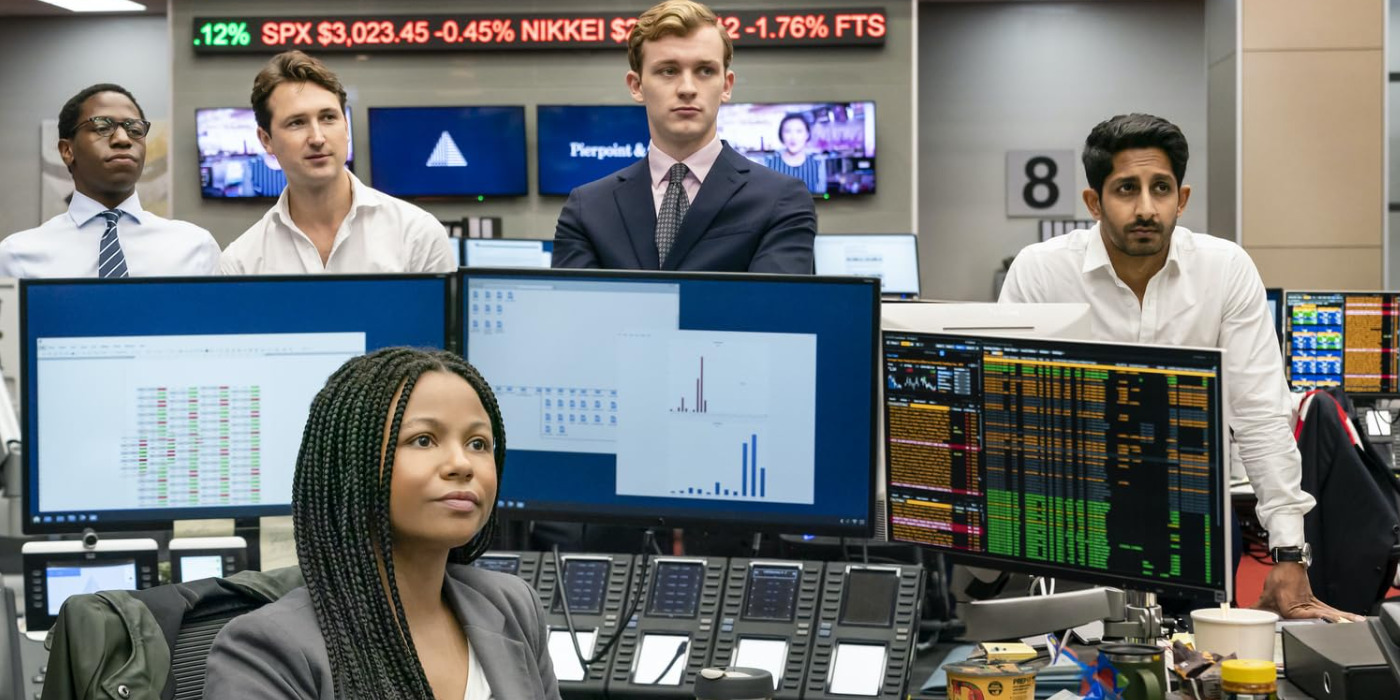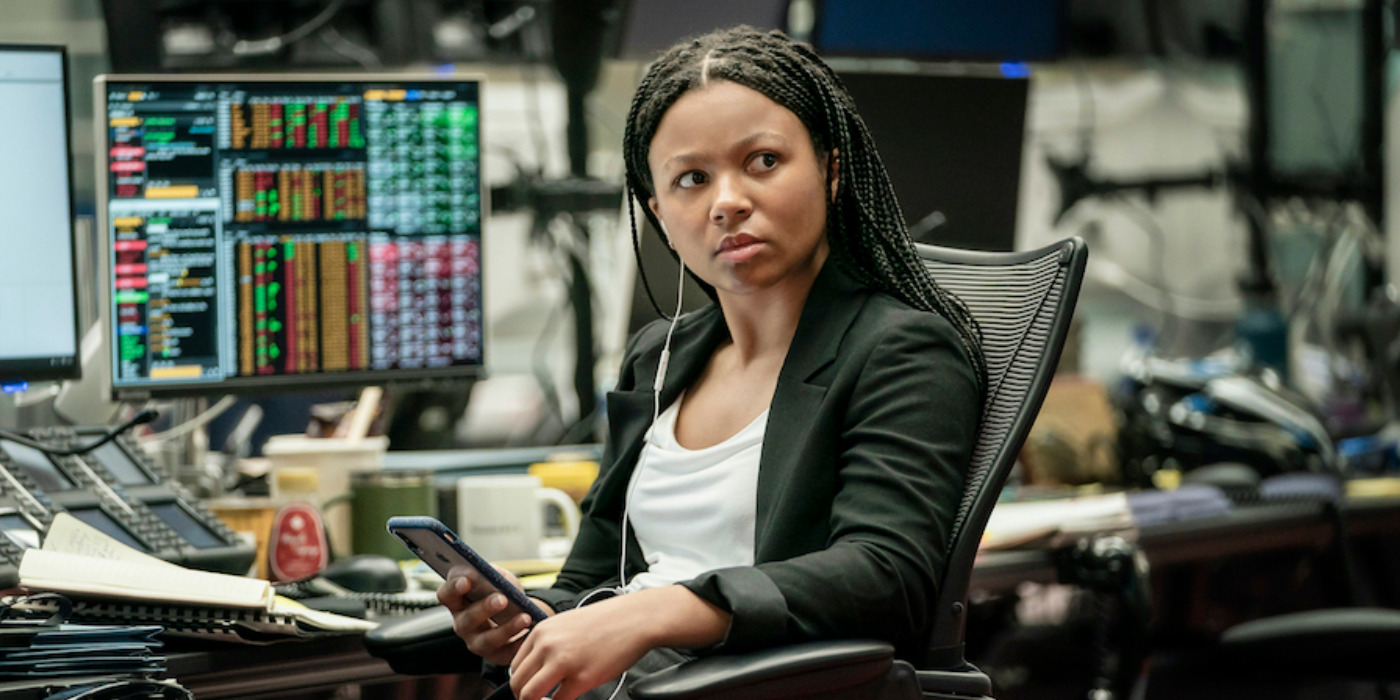Created by Mickey Down and Konrad Kay, HBO Max’s ‘Industry’ showcases the fast-paced and high-stakes world of finance through the lens of an ensemble cast made up of young, ambitious bankers navigating the start of their cutthroat careers. Characters like the often undermined but talented Harper Stern, driven Yasmin Kara-Hanani, working-class Robert Spearing, and his Eton-educated roommate, Gus Sackey, make up the narrative center. With senior VPs as their mentors and the Pierpoint trading floor as their brutal battlefield, these aspiring financiers strive to prove their worth—and make bank while they do so! Naturally, as each episode takes the viewers through the ins and outs of being a banker at Pierpoint & Co., one will be compelled to speculate upon the investment bank’s relationship to reality.
Pierpoint is Based on the Creators’ Real Experiences in Finance
The show ‘Industry’ as a whole is a dramatized account of the banking field heavily inspired by the authentic reality of the profession backed by the realistic experiences of experienced individuals. Consequently, even though Pierpoint & Co. isn’t an actual bank that exists in real life, it retains ties to the actual work culture and professional demands of the world of finance. The creators, Mickey Down and Konrad Kay, both sported a career in finance—to varying degrees—before changing gears into TV writing. Therefore, when the opportunity presented itself, they were able to reap their own experiences for inspiration while crafting the world within Pierpoint.

As such, Pierpoint & Co. doesn’t biographically replicate any particular establishment. Still, the show’s depiction of banking within the firm’s walls remains heavily influenced by real-life experiences. In an interview with Newsweek, Down expanded upon how the same manifests in the demographical makeup of the fictional company. “You would expect these places [banking firms] to be full of straight white men [but] from my experience, these places are quite diverse—they are international places, and then you get people from all around the world coming to them,” said the creator. “So they are a little bit more multicultural than maybe people give them credit for.”
Thus, ‘Industry’ brings the same reality to the screen through a diverse range of characters, showcasing various worldviews under the same job titles. Furthermore, Pierpoint’s on-screen corporation expands upon its authenticity through a carefully planned visual output of the prominently featured trading floor. Discussing the same, Kay shared, “Me and Mickey [Down] and the production designer were obsessed with trying to make it—trading floors are very dirty places with very busy desks, food everywhere, and the bins are always full. We were obsessed with replicating that.”

Kay further shared, “We have friends in the business, and a couple of them did a couple of set visits, and they just could not believe how real it looked—because, I mean, we effectively did build an almost fully functional trading floor.” Therefore, the on-screen banking firm remains a realistic portrayal of the real deal both in terms of literal visuality and corporate environment. Yet, Pierpoint & Co. in itself remains detached from reality without any identical counterparts connected to it.
Pierpoint: Potential Real-Life References
Having established the fictionality of Pierpoint & Co. in terms of its lack of a real-life counterpart, it becomes crucial to acknowledge the actual banking firms that it possibly references. Most notably, the fictionalized company, a prestigious London-based firm, seems to allude to the well-known American finance company JPMorgan Chase & Co. In the case of the latter firm, its name comes from its founder, John Pierpont Morgan, a legendary financier of the 1870s Gilded Age and beyond. The similarity between Morgan’s middle name, Pierpont, and ‘Industry’s’ Pierpoint remains evident.

Furthermore, another well-known banking company, Morgan Stanley, became attached to the show through Konrad Kay, who worked at the company for three years. Moreover, the professional consultant on the show who ensures accuracy in the show’s dialogues and narratives is another Morgan Stanley alumnus. “We were adamant that we wanted to get 100% of everything right that we could texturally about the world, said Kay in a Press Q&A while discussing the significance of maintaining authenticity.
“The production design, the jargon, the cadence of the language, the way people speak to each other,” Kay added. “Coming from that world, we wanted people who watched in that world to be like, OK, they are getting a lot of it right—so I’m gonna go with it.” Thus, ultimately, despite the occasional exaggeration and dramatization that unfolds at Pierpoint, the fictional banking firm remains close to reality.


You must be logged in to post a comment.